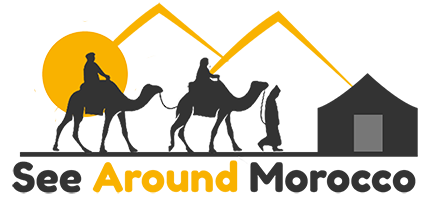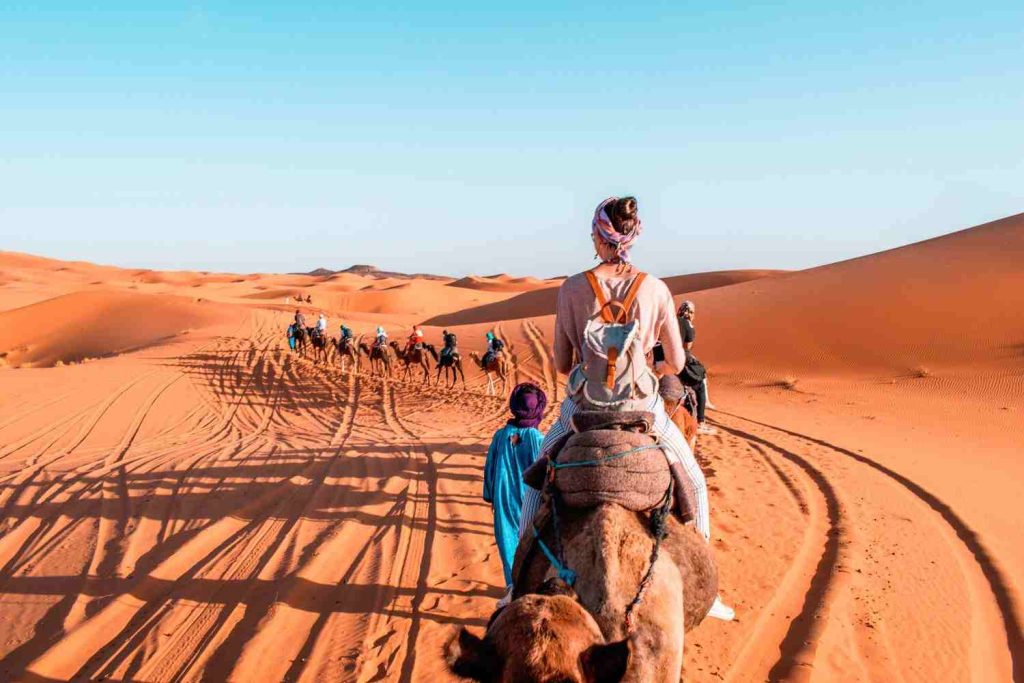
Traveling around Morocco in 2025 is an adventure in itself, offering a mix of modern convenience and thrilling experiences. While the country isn’t vast, getting from one place to another can be a unique journey. From air-conditioned high-speed trains zipping between major cities to heart-racing taxi rides through bustling streets, the options are endless, each with its own charm. Whether you’re hopping on a train, taking a bus to a smaller town, or renting a car for a more remote destination like the Atlas Mountains or the Sahara Desert, there’s always a new way to explore this vibrant land.
If you want to truly experience Morocco, don’t forget to walk through the winding medinas, but also embrace the variety of transportation that takes you from the beaches to mountain villages, and from the historical cities to desert outposts. So, if you’re wondering how to travel around Morocco, rest assured that you can mix and match these travel options to discover the country’s full, fascinating diversity.
How To Travel Around Morocco?
Curious about how to travel around Morocco? Let us guide you through it in the most exciting and stress-free way possible. Morocco might look compact on the map, but moving between its buzzing cities, sleepy mountain villages, and golden desert landscapes is a journey packed with variety. The good news? You’ve got options lots of them. High-speed trains connect the major cities like Casablanca, Rabat, and Tangier with comfort and speed.
Buses are perfect for reaching those off-the-beaten-path towns, while taxis (some more thrilling than others) are everywhere in and around cities. Want to explore the Atlas Mountains or the Sahara Desert? A rental car or private driver can take you where public transport won’t. And for the adventurous, even motorcycle travel is on the table! In this blog, we’ll break down the best ways to get around each part of Morocco, so you can plan your trip smartly and enjoy every step of the ride.

Renting a car
If you’re wondering how to travel around Morocco with total freedom, renting a car might be your golden ticket. Whether you’re planning to cruise along the coast, dive into the Sahara, or wind through the dramatic curves of the Atlas Mountains, having your own wheels lets you do it all at your own pace. From compact city cars to rugged 4WDs perfect for remote desert tracks, there’s something for every type of traveler. Expect to pay anywhere from £40–£55 ($55) per day, or around £250 ($320) per week usually with unlimited mileage and insurance included.
You’ll find international rental giants like Hertz, Avis, Budget, and Europcar at major hubs such as Casablanca, Marrakesh, and Agadir, and it’s often cheaper (and less stressful) to book online in advance. That said, local rental companies can offer better prices just be sure to check the car’s condition and take photos of any existing damage. Keep in mind that Moroccan cities can be chaotic: traffic jams, minimal parking, and creative interpretations of road rules are all part of the experience. If you’d rather sit back and soak up the views, hiring a driver is a great option and surprisingly affordable, starting at around £32 ($42) a day.
Some hotels and tour operators can even help with arrangements. Bottom line: if you’re ready for a little adventure and flexibility, renting a car is one of the best ways to see the real Morocco.
Taxis
One of the easiest answers to how to travel around Morocco especially within cities is to hop into a petit taxi. These little cars are everywhere, and each city has its own color code: red in Casablanca, blue in Rabat, yellow in Marrakesh. They’re cheap, quick, and usually metered, which means no haggling in theory. If your driver claims the meter’s “broken” (a classic move), just smile, hop out, and grab the next one. Always carry small change it makes life easier.
For longer distances between towns or villages, Morocco’s shared grand taxis are a whole different experience. These old-school Mercedes or newer vans wait at terminals until they fill up usually six people and then hit the road on fixed routes. Want more comfort or less waiting? Pay for extra seats or even the whole car, with typical intercity rides starting around Dh50. You can even rent a grand taxi and driver for a custom road trip across the country. While Uber doesn’t operate here, you can use Careem (owned by Uber) in cities like Casablanca, Rabat, and Tangier. Whether you’re zipping through traffic or heading deep into the countryside, taxis are a flexible, authentic way to explore Morocco.
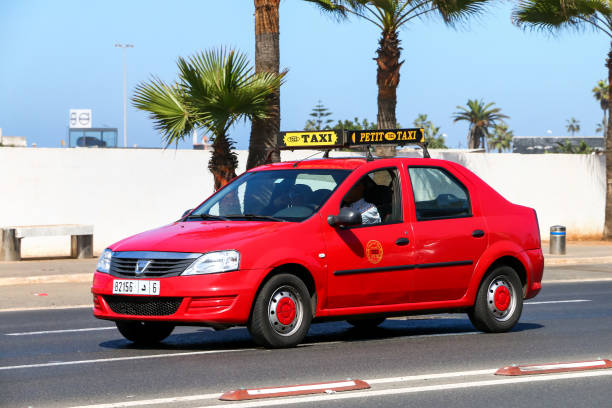
Trains
When it comes to getting between Morocco’s main cities with minimal hassle and maximum comfort, trains are hard to beat. Morocco’s national rail service, ONCF, connects key destinations like Tangier, Casablanca, Rabat, Fes, Meknes, and Marrakesh and it’s both budget-friendly and surprisingly smooth. The star of the show is the Al Boraq high-speed train, Africa’s first, zipping between Tangier and Casablanca at up to 320km/h (200mph) in just over two hours. It’s air-conditioned, quiet, and (for once) actually punctual.
For a little extra space and calm, first-class is worth the upgrade. While the regular trains aren’t quite as fast, they’re still reliable and comfy just don’t expect perfect timetables or fancy station facilities. Grab snacks and hit the bathroom before you board. If you’re planning to visit the south, Chefchaouen, or the Sahara, you’ll need to switch to a bus or rental car, as trains don’t reach those parts. And if you’re exploring Casablanca or Rabat, both cities also offer sleek tram systems for easy local travel.
Buses
For travelers who want to see more of Morocco without blowing the budget, buses strike a perfect balance between cost and comfort. The country’s top two bus companies CTM and Supratours offer surprisingly reliable services, and if you upgrade to their “luxe” options, expect comfy seats, extra legroom, and even onboard Wi-Fi. CTM covers most regions with designated stops that aren’t always in the main stations, while Supratours (run by the national rail company ONCF) is great if you’re syncing your trip with train schedules.
Now, if you’re heading off-the-grid into rural Morocco, “market buses” smaller, no-frills options are available in nearly every village, though comfort and safety aren’t always guaranteed. Compared to grand taxis, buses are cheaper and more secure, though slightly slower. Pro tips: for daytime rides, choose your seat based on the sun’s position to avoid being roasted, and bring your own snacks especially on rural routes.
Buying tickets can be tricky online due to card issues, so your best bet is buying directly at the station or using trusted third-party services. And remember, CTM buses don’t always depart from the main terminal, so double-check the location before you head out. Whether you’re cruising between cities or venturing deep into the countryside, buses are a practical and accessible choice in your Moroccan adventure.
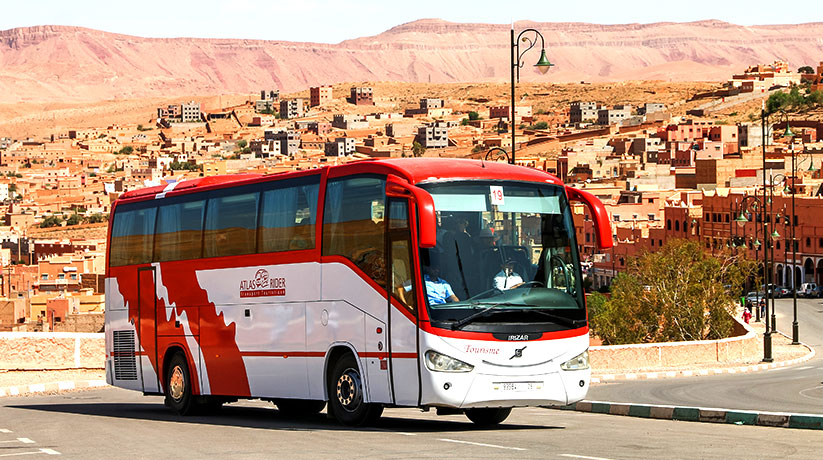
Domestic flights
If you’re short on time and don’t mind spending a bit more, flying can save you from spending entire days on Morocco’s winding roads. Royal Air Maroc, the national carrier, connects Casablanca to major cities like Dakhla, Laayoune, and Errachidia but heads-up: most routes require a layover in Casablanca unless you’re lucky enough to find a direct connection. For instance, hopping on a flight from Casablanca to Laayoune takes under two hours, compared to a grueling 19-hour bus ride.
Need to get to Dakhla? The plane gets you there in 2h20m, while the bus crawls in after 28 hours. For a faster, more affordable hop between Fes and Marrakesh, budget airline Air Arabia is a great alternative, cutting a six-hour road trip down to just one hour in the sky. Flying is especially useful if you’re heading to remote areas like the Western Sahara or the desert gateways near Merzouga just keep in mind the environmental trade-offs. Tip: for the best prices, check deals on Kayak or other flight aggregators. Sometimes, paying a bit more means gaining a full extra day of adventure.
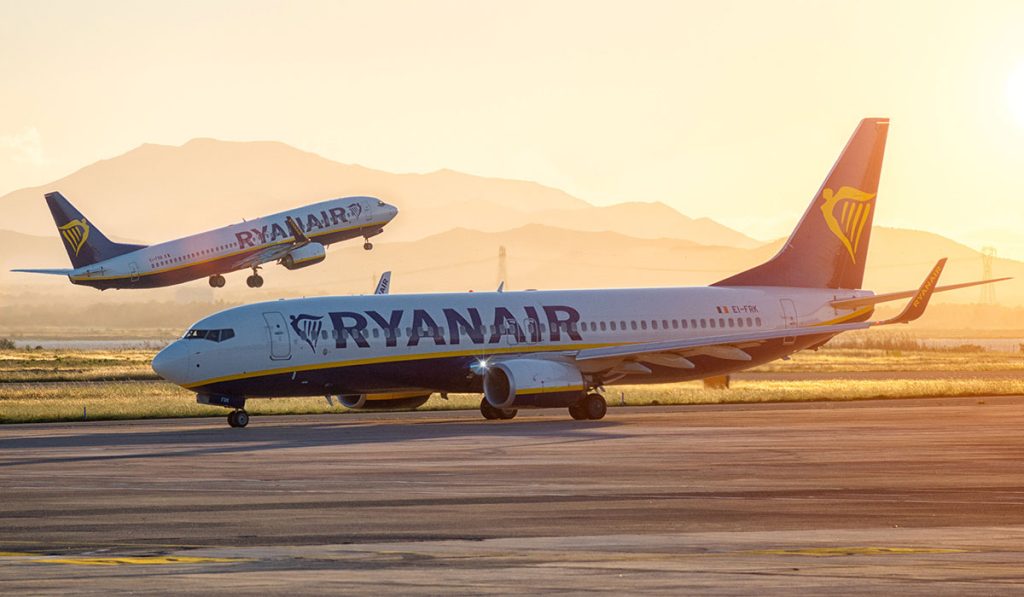
Shared taxis
For a quick and local way to get around, shared grand taxis are a must-try. These aren’t your regular cabs, they’re big old Peugeot or Mercedes cars, packing in six passengers on fixed routes between towns and cities. They’re often quicker than buses, and sometimes even faster than trains, especially on shorter routes.
Just show up at the taxi rank early 6 to 8am is prime time when seats fill up fast. Midday rides can be a waiting game. Want just one seat? Say “une place” in French or “plassa” in Arabic otherwise, the driver might assume you want the whole car (and charge accordingly). Solo women travelers often book two seats for extra space. Prices are fixed and usually fair, even for tourists but if in doubt, ask locals or your hotel. Safety-wise, it’s best to avoid night trips: drivers often speed and work long shifts, especially on busy roads. One more tip if you’re flagging a taxi on the road, hold up your fingers to show how many seats you need. It’s an adventure, but it works.
conclusion
Traveling around Morocco in 2025 is all about embracing variety and flexibility. Whether you’re racing through the country on a high-speed train, soaking in the landscapes from a car rental, or enjoying the convenience of shared taxis, there’s a mode of transport for every type of traveler. From bustling cities to remote desert landscapes, Morocco offers a range of options that can make your journey smoother, faster, and more exciting. Renting a car gives you the freedom to explore at your own pace, while taxis and buses help you get from one vibrant destination to another. And if you’re short on time, domestic flights can save hours, especially for long-haul trips to the south or the desert. The key to navigating Morocco is to mix and match these transport options to suit your itinerary, budget, and time constraints.
So, pack your bags, plan your route, and get ready for an unforgettable adventure through this beautiful and diverse country. Whether by train, car, taxi, or flight, how you travel around Morocco is as much part of the experience as the destinations themselves.
